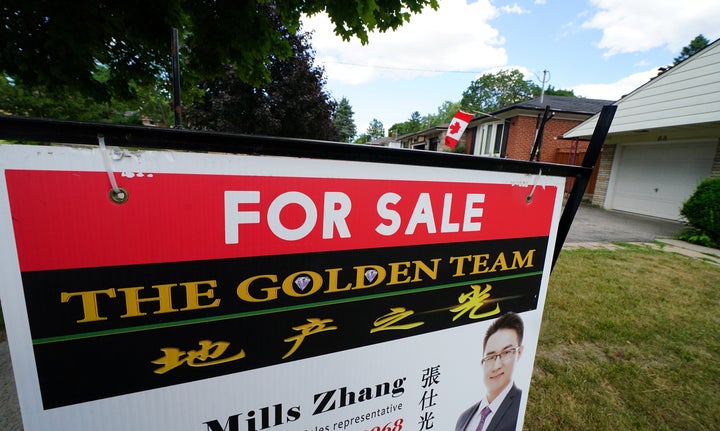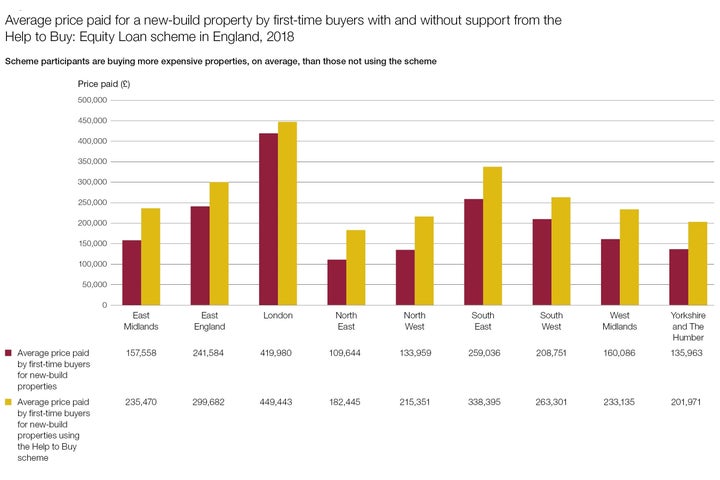
The federal government’s new plan to help homebuyers could loosen the country’s housing supply crunch and help more Canadians get onto the property ladder ― but it could also worsen affordability and mean a new financial risk for the country’s government-run mortgage insurer.
The federal government on Monday announced details of the First-Time Home Buyer Incentive, under which Canada Mortgage and Housing Corp. (CMHC) will “buy a share” of a first-time buyer’s home, in order to reduce the amount owing and monthly payments.
CMHC will buy up to 5 per cent of an existing home or 10 per cent of a newly-built home, and will take its share back only when the participating buyer sells the house.
The amount to be paid back will be linked to the value of the house. So if CMHC contributes $25,000 to a $400,000 house, and that house rises in value by 20 per cent, CMHC will collect $31,250 when the house sells for $500,000. But if the house falls in value by 20 per cent, then CMHC will collect $20,000.
Watch: How Canada’s high house prices are a threat to jobs. Story continues below.
The launches on Sept. 2, about seven weeks before the federal election. It will be available to first-time buyers with a household income of no more than $120,000, and the total amount borrowed can’t be more than four times income. That limits the maximum purchase price to the $500,000 to $600,000 range, depending on the size of the down payment.
For this reason, some market analysts have said Ottawa’s plan will have little impact on Greater Toronto, where the average selling price of all housing types was $838,540 in May, and in Greater Vancouver, where the benchmark property price sits at $1.006 million.
The program “may be enough to buy a small- to medium-size condo apartment in those markets but probably not a family-friendly home,” Royal Bank of Canada economist Robert Hogue wrote earlier this year.
Other economists have suggested that a program that allows buyers to spend more won’t help improve housing affordability. That’s backed up by new research from the U.K., where a similar program running since 2013 has helped some 211,000 people buy new homes so far.
In a report issued last week, the British government’s National Audit Office found that homebuyers may be using the program simply to increase the maximum price they can afford.
Buyers using the plan spent 7 per cent more, on average, for a home in London than others did. In the U.K.’s North West, buyers using the plan spent 67 per cent more than others on homes.

Meanwhile, the average house price in the U.K. has risen 35 per cent since Help To Buy became active, with prices rising faster since the plan than they were before.
“It’s now beyond clear that rather than helping those who can’t afford to buy a home, Help to Buy has mainly been a subsidy for a housing bubble, benefiting property developers and existing homeowners,” said Fran Boait, executive director of Positive Money, a European activist group seeking reforms to the financial system.
A boost to housing supply
But the NAO says the plan did put some 92,000 British households in their own homes, that otherwise would not have been able to afford to buy.
And it has meant an increase in new home construction, about 14.5 per cent more than otherwise would have happened, the NAO said. That’s something that could benefit Canada as well, given accelerated immigration levels mean some parts of the country may not be building enough new housing.
The British plan differs from Canada’s in several important respects. For one, the British version is available only to buyers of newly-built homes. Canada’s plan also favours newly-built homes by offering up to 10 per cent of equity, but also offers 5 per cent to buyers of existing homes.
Also, the British version had no income limit until recent changes, and is more generous, offering up to 40 per cent for buyers in London, and 20 per cent to buyers outside London.
A risk to taxpayers
But there is one way in which the plan is the same: It means the government will be taking a risk on the direction of the housing market.
The NAO report stated that the government “recognizes the investment is exposed to significant market risk” because of house price fluctuations.
“At points when the market turns down (whether over the near, medium or longer term), the taxpayer could lose out significantly, as the government’s investment in housing capital would reduce in value,” the report said.